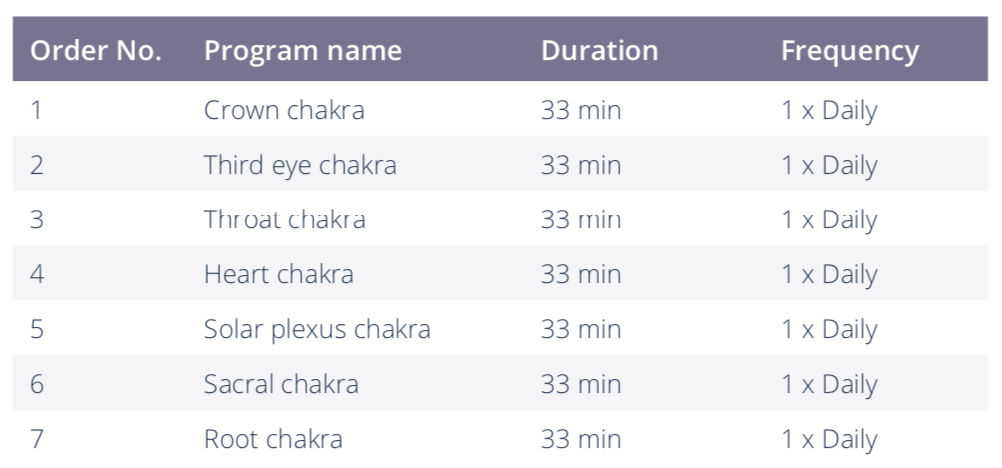Chakras
The chakra system is thousands of years old and references to it can be found in many cultures all over the world. The Hopi, Inca and Maya cultures, for example, make references to the chakras.
A large part of Asian teachings and religions are based on the principles of the Indian chakra teachings. The influence of the Indian chakra teachings reaches so far that they form the foundation for Buddhism and Hinduism, as well as for various techniques of energy and body work, such as Yoga, Tai Chi, Ayurveda, TCM and spiritual healing.
Furthermore, spiritual as well as energy practitioner circles have adopted these teachings as the basis of many methods of energy and healing work.
The chakras serve the physical body and the subtle body (the aura) as mediators and it is thought that they function as a kind of transformer.
According to this model, the chakras are connected with the different aura layers and the meridians (energy paths) of the body and are also able to absorb energies of the cosmos and the ethereal world. Absorbed energies (vibrations) can be either a “positive“ influence (beneficial and useful) or a “negative“ influence.
The chakra teachings say that there are seven main chakras which are located along the spine or in the vertical central axis of the body, following the Kundalini energy, from the root chakra to the crown chakra. According to the chakra system, the Kundalini power rises upwards through this assumed energy channel (called sushumna or hara line).
The seven main chakras are characterized by certain functions and colors. For example, the lowest of the seven chakras, the red root chakra, indicates the basic trust level of a person. It stands for a fundamental part of the developmental process, because the basic trust level is established at the beginning of the child’s life. The crown chakra, the highest of the chakras, which is usually depicted in white or slightly violet, reflects, among other things, the knowledge about the universe that a person has collected with age. The colors of the chakras correspond to their individual vibration frequencies.
In addition to the subtle interpretation of the chakras, the main chakras can be assigned physically to the organs and glands with which they are supposed to be connected. Physical and mental challenges often lead to chang- es in these energy fields.
Using intuition, one can perceive the existence and the position of the chakras and explore one‘s own energy field. In principle, anyone can learn how to feel energy fields under professional guidance and with practice by attending appropriate seminars. Often more and more sensitive abilities are developed in the process of an energetic initiation and with progressive use of the different methods of energy work. The Healy IMF chakra programs aim to bioenergetically harmonize these central energy centers and bring them back into their natural balance.

